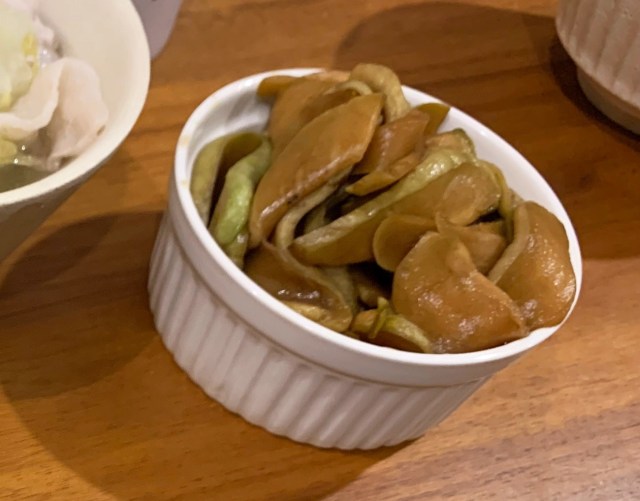
These delicious pickles are hard to obtain, but even harder to stop eating!
Our Japanese-language reporter Seiji Nakazawa recently spent a few days in Fujino, a mountainous area in Sagamihara city, Kanagawa Prefecture. Around an hour outside of Tokyo, Fujino is a rural area with a small population, but is home to the annual Soraniwa Music Festival, which Seiji took part in organising this year.
It was during his time volunteering for the Soraniwa Music Festival that he was gifted a mysterious fruit by a local farmer from Fujino, making him feel like a character in a strange cooking-based RPG.
▼ “It’s dangerous to go alone! Take this.”
It was gifted to all volunteers who helped at the festival, but Seiji had never seen such a fruit before. It kind of looked like an avocado with its skin peeled off, but the surface of the fruit was dry, tough and rigid. It’s certainly not a common vegetable in Japan, so Seiji was a little puzzled as to what to call it, let alone what to do with it.
He decided to ask Batako, one of his fellow Soraniwa Music Festival volunteers and someone who lives in Fujino. During their conversation, Seiji had a sudden flashback to the day before the festival, where a bunch of the volunteers had spent the night at Batako’s house and she’d made them all dinner.
▼ Cue flashback!
It was delicious, of course, but there had been a part of the meal that stood out to Seiji — the mysterious pickled objects in the ramekin on the right.
The texture was crisp and crunchy, with a gentle sweetness. It was absolutely the best pickled thing Seiji had ever eaten, and he’d eagerly asked Batako what it was called.
“That’s chayote squash,” Batako said.
Chayote squash, also known as mirliton or choko, might have stumped Seiji, but it’s frequently eaten in South America and many parts of Asia. Regular supermarkets throughout Japan aren’t likely to stock chayote squash and Seiji had never seen one in any of his local Tokyo supermarkets, but it’s something of a local specialty in Fujino, with each family having their own special way of preparing it.
Seiji decided to ask his fellow Soraniwa volunteers to share a recipe with him, and here it is. Thankfully it only involves four simple ingredients — soy sauce, mirin, sake, and chayote squash. Like all the best family recipes, there aren’t exact amounts for each ingredient, so just go with your gut!
First, mix the soy sauce, mirin and sake in a 1:1:1 ratio in a saucepan and bring to a boil. Chop up the chayote squash into thin, bite-sized pieces.
As a side note, there are cases online of people reporting having a reaction to the chayote juice when chopping it. Seiji didn’t have any negative reaction, but those with sensitive skin may wish to wear gloves when handling the fruit.
Once the mixture has come to the boil, turn off the heat and stir in your chayote squash.
Put a lid on and leave your mixture to stand until it’s ready.
According to some of the volunteers who shared this recipe, boiling the mixture twice will let the squash soak up more of the flavour, but as Seiji went to taste-test his creation, it was almost exactly the same flavour as the squash he had back in Batako’s house!
Seiji’s creation was just a tad more salty that Batako’s, but even so his chopsticks wouldn’t stop moving from the plate to his mouth. He plans to make it again, adding a bit of sugar and vinegar next time, provided he can even find another chayote squash in the first place!
In the meantime, he can always get his pickling fix from his fellow reporter Go Hatori and his professional pickling grandpa.
Photos ©SoraNews24
● Want to hear about SoraNews24’s latest articles as soon as they’re published? Follow us on Facebook and Twitter!
[ Read in Japanese ]

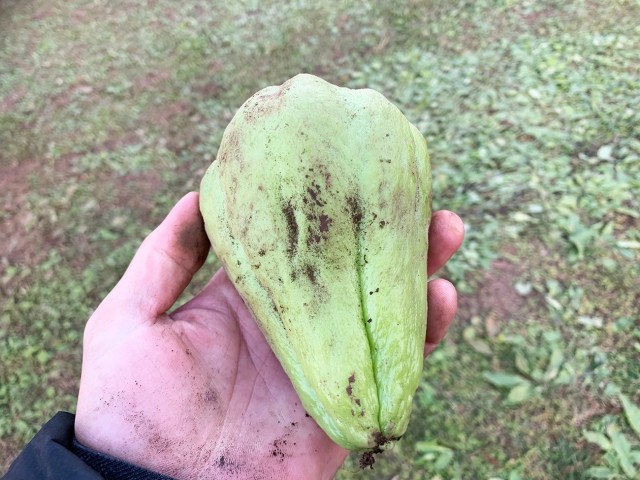

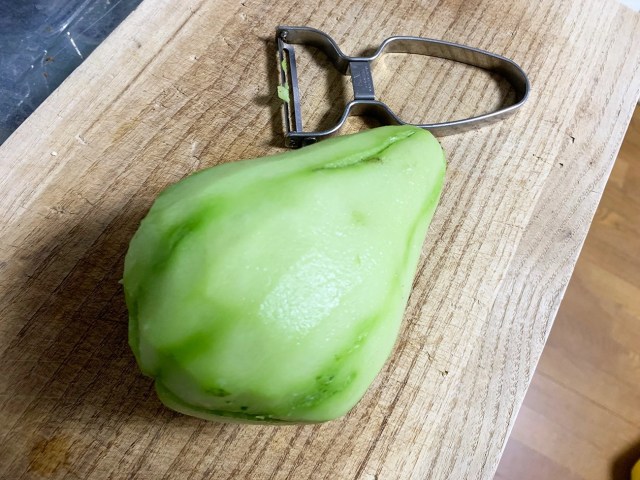
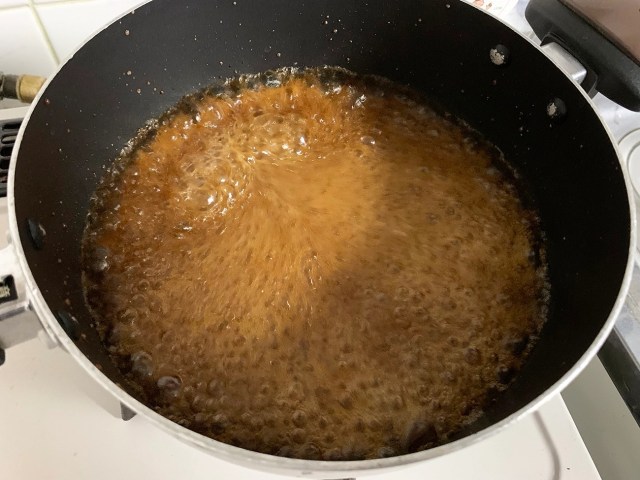
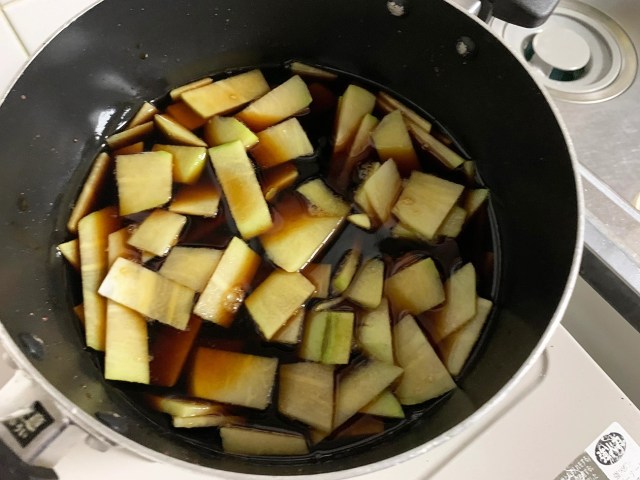
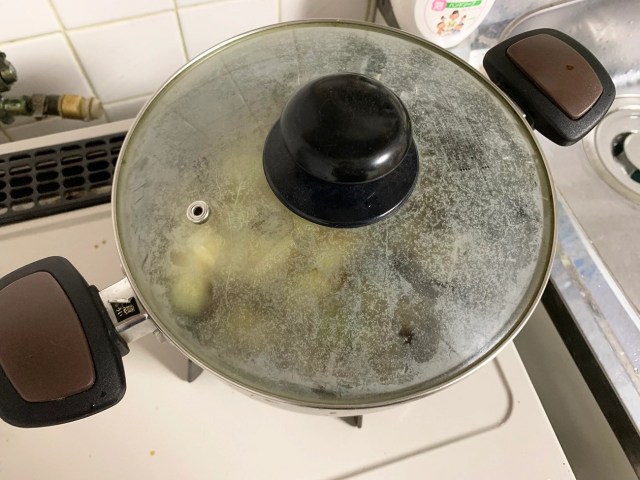
 This is the one and only kakuni pork bowl restaurant in Tokyo, and it’s amazing
This is the one and only kakuni pork bowl restaurant in Tokyo, and it’s amazing The best soba restaurant on Yakushima island, according to locals
The best soba restaurant on Yakushima island, according to locals A Gintama fan’s emotional 19-year journey to buy a proper Lake Toya bokuto wooden katana【Pics】
A Gintama fan’s emotional 19-year journey to buy a proper Lake Toya bokuto wooden katana【Pics】 What happens when you cook beer with potato chips in a rice cooker?
What happens when you cook beer with potato chips in a rice cooker? Reporter Seiji is now guitar-strumming rockstar Seiji, makes his debut in England this August
Reporter Seiji is now guitar-strumming rockstar Seiji, makes his debut in England this August Red light district sushi restaurant in Tokyo shows us just how wrong we were about it
Red light district sushi restaurant in Tokyo shows us just how wrong we were about it Japanese ramen restaurants under pressure from new yen banknotes
Japanese ramen restaurants under pressure from new yen banknotes McDonald’s new Happy Meals offer up cute and practical Sanrio lifestyle goods
McDonald’s new Happy Meals offer up cute and practical Sanrio lifestyle goods Tokyo Tsukiji fish market site to be redeveloped with 50,000-seat stadium, hotel, shopping center
Tokyo Tsukiji fish market site to be redeveloped with 50,000-seat stadium, hotel, shopping center Beautiful Red and Blue Star luxury trains set to be Japan’s new Hokkaido travel stars
Beautiful Red and Blue Star luxury trains set to be Japan’s new Hokkaido travel stars Akihabara pop-up shop sells goods made by Japanese prison inmates
Akihabara pop-up shop sells goods made by Japanese prison inmates Mt. Koya planning to instate visitor’s tax to cope with huge tourist numbers
Mt. Koya planning to instate visitor’s tax to cope with huge tourist numbers Sandwiches fit for a sumo served up in Osaka【Taste Test】
Sandwiches fit for a sumo served up in Osaka【Taste Test】 Haku is…Chihiro’s dead brother? Studio Ghibli fans blown away by Spirited Away theory
Haku is…Chihiro’s dead brother? Studio Ghibli fans blown away by Spirited Away theory Pokémon Sleep camping suite and guestrooms coming to Tokyo Hyatt along with giant Snorlax burgers
Pokémon Sleep camping suite and guestrooms coming to Tokyo Hyatt along with giant Snorlax burgers All-you-can-drink Starbucks and amazing views part of Tokyo’s new 170 meter-high sky lounge
All-you-can-drink Starbucks and amazing views part of Tokyo’s new 170 meter-high sky lounge More foreign tourists than ever before in history visited Japan last month
More foreign tourists than ever before in history visited Japan last month French Fries Bread in Tokyo’s Shibuya becomes a hit on social media
French Fries Bread in Tokyo’s Shibuya becomes a hit on social media Studio Ghibli releases new action figures featuring Nausicaä of the Valley of the Wind characters
Studio Ghibli releases new action figures featuring Nausicaä of the Valley of the Wind characters New private rooms on Tokaido Shinkansen change the way we travel from Tokyo to Kyoto
New private rooms on Tokaido Shinkansen change the way we travel from Tokyo to Kyoto Starbucks reopens at Shibuya Scramble Crossing with new look and design concept
Starbucks reopens at Shibuya Scramble Crossing with new look and design concept Studio Ghibli glasses cases let anime characters keep an eye on your spectacles
Studio Ghibli glasses cases let anime characters keep an eye on your spectacles Beautiful Ghibli sealing wax kits let you create accessories and elegant letter decorations【Pics】
Beautiful Ghibli sealing wax kits let you create accessories and elegant letter decorations【Pics】 Studio Ghibli releases Kiki’s Delivery Service chocolate cake pouches in Japan
Studio Ghibli releases Kiki’s Delivery Service chocolate cake pouches in Japan New definition of “Japanese whiskey” goes into effect to prevent fakes from fooling overseas buyers
New definition of “Japanese whiskey” goes into effect to prevent fakes from fooling overseas buyers Our Japanese reporter visits Costco in the U.S., finds super American and very Japanese things
Our Japanese reporter visits Costco in the U.S., finds super American and very Japanese things Studio Ghibli unveils Mother’s Day gift set that captures the love in My Neighbour Totoro
Studio Ghibli unveils Mother’s Day gift set that captures the love in My Neighbour Totoro New Japanese KitKat flavour stars Sanrio characters, including Hello Kitty
New Japanese KitKat flavour stars Sanrio characters, including Hello Kitty New Pokémon cakes let you eat your way through Pikachu and all the Eevee evolutions
New Pokémon cakes let you eat your way through Pikachu and all the Eevee evolutions Disney princesses get official manga makeovers for Manga Princess Cafe opening in Tokyo
Disney princesses get official manga makeovers for Manga Princess Cafe opening in Tokyo Sales of Japan’s most convenient train ticket/shopping payment cards suspended indefinitely
Sales of Japan’s most convenient train ticket/shopping payment cards suspended indefinitely Sold-out Studio Ghibli desktop humidifiers are back so Totoro can help you through the dry season
Sold-out Studio Ghibli desktop humidifiers are back so Totoro can help you through the dry season Japanese government to make first change to romanization spelling rules since the 1950s
Japanese government to make first change to romanization spelling rules since the 1950s Ghibli founders Toshio Suzuki and Hayao Miyazaki contribute to Japanese whisky Totoro label design
Ghibli founders Toshio Suzuki and Hayao Miyazaki contribute to Japanese whisky Totoro label design Doraemon found buried at sea as scene from 1993 anime becomes real life【Photos】
Doraemon found buried at sea as scene from 1993 anime becomes real life【Photos】 Tokyo’s most famous Starbucks is closed
Tokyo’s most famous Starbucks is closed One Piece characters’ nationalities revealed, but fans have mixed opinions
One Piece characters’ nationalities revealed, but fans have mixed opinions We asked a Uniqlo employee what four things we should buy and their suggestions didn’t disappoint
We asked a Uniqlo employee what four things we should buy and their suggestions didn’t disappoint Princesses, fruits, and blacksmiths: Study reveals the 30 most unusual family names in Japan
Princesses, fruits, and blacksmiths: Study reveals the 30 most unusual family names in Japan What’s in a Japan Disney Store Lucky Box? Our non-Disney fanatic finds out!
What’s in a Japan Disney Store Lucky Box? Our non-Disney fanatic finds out! This London ramen restaurant’s super-strange ramen shocks our Japanese taste-tester
This London ramen restaurant’s super-strange ramen shocks our Japanese taste-tester Harvester Yakumo: A restaurant inspired by the Colonel from KFC
Harvester Yakumo: A restaurant inspired by the Colonel from KFC What it’s like to eat dancing squid in Japan for the first time
What it’s like to eat dancing squid in Japan for the first time Japanese ramen chain becomes a hot topic with foreigners on Reddit, but is it any good?
Japanese ramen chain becomes a hot topic with foreigners on Reddit, but is it any good? We cook a monjayaki Japanese pancake on the hood of a car during Japan’s hottest summer ever【Vid】
We cook a monjayaki Japanese pancake on the hood of a car during Japan’s hottest summer ever【Vid】 Supermarket sushi becomes a hot topic with foreigners on Reddit, but is it any good?
Supermarket sushi becomes a hot topic with foreigners on Reddit, but is it any good? We try cooking yakisoba with real Japanese buckwheat soba【SoraKitchen】
We try cooking yakisoba with real Japanese buckwheat soba【SoraKitchen】 Still using water to make your instant noodles? You’re missing out on amazing green tea noodles!
Still using water to make your instant noodles? You’re missing out on amazing green tea noodles! Cup Noodles Breakfast: a curse against instant ramen or the best thing since sliced bread?
Cup Noodles Breakfast: a curse against instant ramen or the best thing since sliced bread? The SoraNews24 secret technique for staying warm in your office this winter【Experiment】
The SoraNews24 secret technique for staying warm in your office this winter【Experiment】 Beyond miso soup – You can get miso bear in a can in Japan, and we’ve tried it【Taste test】
Beyond miso soup – You can get miso bear in a can in Japan, and we’ve tried it【Taste test】 We try Burger King Japan’s CooKING Burger @Home, use up lots of stuff in our fridge
We try Burger King Japan’s CooKING Burger @Home, use up lots of stuff in our fridge What’s so funny about “Sweet Fries of Clowns” from Burger King Japan?
What’s so funny about “Sweet Fries of Clowns” from Burger King Japan? No car? No problem! We find photogenic hidden gems in Yakushima that are easy to get to
No car? No problem! We find photogenic hidden gems in Yakushima that are easy to get to Our reporter Seiji gets a weird package from overseas, meets a friend he didn’t know he had
Our reporter Seiji gets a weird package from overseas, meets a friend he didn’t know he had
Leave a Reply